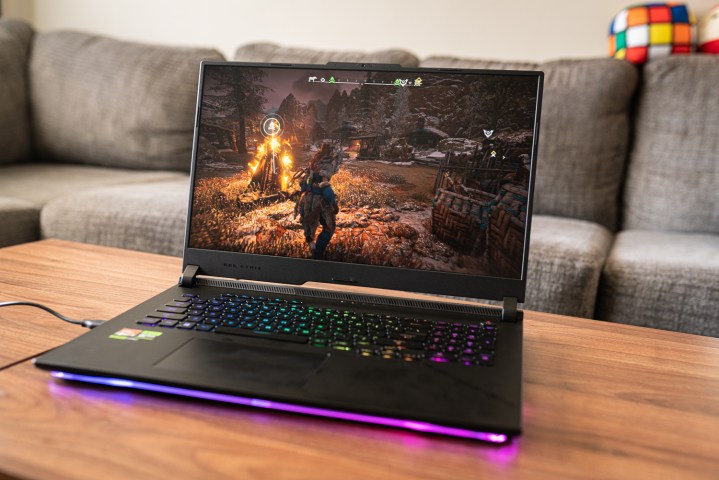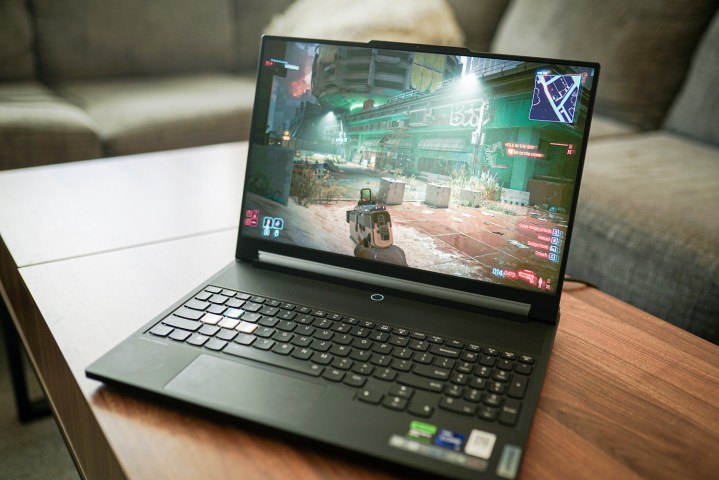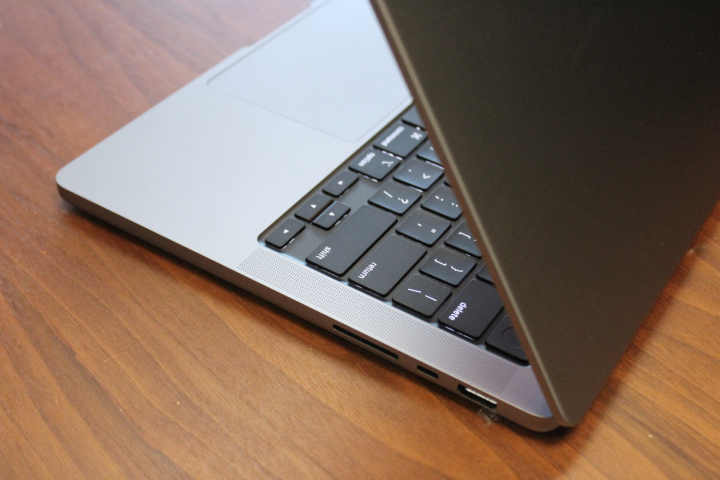
Apple’s M3 Max is an incredibly powerful chip, significantly increasing Apple Silicon’s CPU and GPU performance. It’s gotten a ton of press, but is it necessarily faster than the fastest Windows laptops?
To find out, we pitted it against the Lenovo Legion 9i, a gaming laptop equipped with the ultrafast Intel Core i9-13980HX and Nvidia GeForce RTX 4090, and the Asus ROG Strix Scar 17 with the AMD Ryzen 9 7945HX and the
A brief look at architectures
The Apple M3 Max is an ARM-based system on a chip (SoC) currently at the high end of Apple Silicon’s lineup. It represents the first chips made using a 3nm process and redesigned GPU architecture. On the CPU side, Apple increased the speed of its performance cores by 15% and its efficiency cores by 30% over the M2. Overall, Apple is promising a 20% to 25% improvement in performance. On the GPU side, Dynamic Caching is one technology that speeds up a variety of GPU processes, while gamers will benefit from mesh shading and hardware-accelerated
The M3 Max has up to 16 CPU cores and 40 GPU cores with up to 400GB/s memory bandwidth. That’s mated with up to 128GB of RAM, a boost from a maximum of 96GB. We reviewed the MacBook Pro 14 with the 16-core CPU/40-core GPU M3 Max.
The Intel Core i9-13980HX is a 55-watt processor with 24 cores (eight Performance cores and 16 Efficient cores) and 32 threads. The Performance cores run at up to 5.60GHz while the Efficient cores run at up to 4.0GHz. It stands at the top of the Intel mobile Raptor Lake lineup and focuses on providing high clock speeds and more cores for performance gains over its 12th-gen predecessor.
The AMD Ryzen 9 7945HX is a 55-watt CPU with 16 cores and 32 threads running at up to 5.4GHz. It’s at the top of AMD’s mobile CPU lineup and based on the company’s Zen 4 architecture. It can ramp up to 75 watts and even higher clock speeds, promising incredibly fast performance.
The Nvidia GeForce RTX 4090 is the fastest mobile GPU available today, utilizing an array of new technologies such as Shader Execution Reordering and DLSS 3 to provide potent gaming performance. It can also speed up various tasks in creative, design, and engineering applications, making it a popular choice in high-end performance-oriented
Synthetic benchmarks

In the Geekbench 6 synthetic benchmark, which runs through a litany of CPU-intensive processes, the M3 Max is the fastest laptop CPU we’ve tested. The Core i9-13980HX does well, but it can’t keep up. I’ve included several other
The results are more mixed in the Cinebench R24 benchmark, which tests both the CPU and GPU rendering a complex image. The Core i9-19380HX was faster in the multi-core test, but slower in the single-core test, showing the brute strength of the chip’s 24 CPU cores. The
We didn’t test the ROG Strix Scar 17 in the latest versions of these benchmarks and so its results aren’t included here. But it’s likely to be competitive with the Legion 9i.
| Geekebench 6 single / multi |
Cinebench R24 single-core |
Cinebench R24 multi-core |
Cinebench R24 GPU |
|
| MacBook Pro (M3 Max) |
3,174 / 21,137 | 139 | 1522 | 12765 |
| Lenovo Legion 9i (Core i9-19380HX/RTX 4090) |
2,959 / 17,367 | 125 | 1665 | 23212 |
| MacBook Pro (M2 Max) |
2,668 / 14,422 | 121 | 1032 | 5592 |
| iMac (M3) |
3,075 / 11,994 | 140 | 657 | 3728 |
| Dell XPS 15 (Core i7-13700H/RTX 4070) |
2,448 / 12,367 | 87 | 647 | 8601 |
Real-life benchmarks

Adobe’s Premiere Pro is an excellent example of the kind of applications that appeal to the creator market that Apple is targeting with the MacBook Pro. It’s an intensive application that benefits from a fast CPU and GPU and tons of
The PugetBench Premiere Pro benchmark runs in a live version of Premiere Pro and therefore provides a legitimate indication of a real-world laptop’s performance. The latest version tests a variety of video encoding, decoding, and GPU-accelerated effects to provide a realistic and comprehensive idea of real-world performance.
The ROG Strix Scar 17 scored the fastest result we’ve seen in this benchmark, with an overall score of 928. The M3 Max is in second place in our database at 889, while the Legion 9i comes in at third at 838. By comparison, the Dell XPS 17 with a Core i7-13700H and an RTX 4070 scored 568, while the MacBook Pro 14 with the M1 Pro managed just 467.
These results are most impressive for the M3 Max given the sheer brute force of the
The M3 Max is a beast, and so are the others, but …

There’s an elephant in the room in all these comparisons, which is that the MacBook Pro is completely unlike the Legion 9i and ROG Strix Scar 17 in terms of product category. It’s not a loud, thick,
And suffice it to say that these two
The M3 Max really is a game-changer. We’ll have to wait and see what Intel, AMD, Nvidia, and laptop manufacturers are able to do next year, but in the meantime, the M3 Max MacBook Pro remains in a class of its own.
Editors' Recommendations
- Why Apple’s M3 Ultra could be an absolute monster
- I’m a laptop reviewer, and I can’t wait for the new Windows on ARM laptops
- Here’s why people are raising concerns about the M3 Pro MacBook Pro
- Nobody knows exactly how the M3’s Dynamic Caching works, but I have a theory
- Apple’s new M3 Pro might come with an unexpected downgrade


